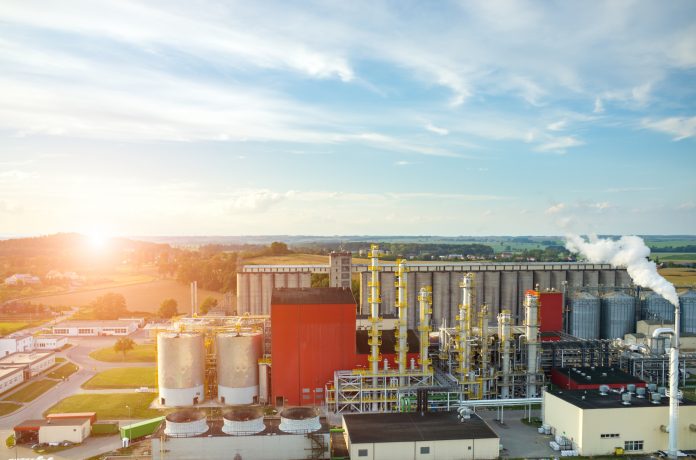Olga Gómez de Miranda, Scientific researcher from TECNALIA illustrates the innovative technologies and strategies in place to improve sustainable development
The transition from current industrial petrochemical models to new sustainable ones encourages to redefine manufacturing activities to orient them towards new bio-based and circular economy strategies. These two concepts drive societies to a more efficient development. Reducing the dependency on fossil-based resources promotes healthy and secure production and supply of materials. The European Green Deal has marked as a priority area of development by the implementation of sustainable and optimized processes based on rational consumption of natural resources. [1]
How bioeconomy and circular economy boost European development
One of the key aspects of the circular economy is waste reduction, it keeps materials in use, and promotes the claim of doing more with less. Therefore, there is scope for business opportunities to implement circular economy projects which consider residues as potential raw materials that can be re-introduced into the value chain giving benefits. [2]
The refining processes of vegetable oils and fats, as well as the oleochemical industries, are also involved in this new perspective. World vegetable oil production amounted to more than 210 million metric tons last year. [3] Oilseeds processing and refining to obtain edible oils, and the further modifications to convert them into oleochemicals, produce a variety of waste products.
Industrial residues as new raw material resources
Soapstocks and deodorizer distillates are the major by-products of vegetable oil refining. They have little commercial value and are sold at a fraction of the oil cost. [4] These residual materials may result harmful to the environment, but at the same time, they have potential value for different applications. Moreover, it is necessary to consider that as the human population increase, the consumption of edible oils is also expected to increase, thereby generating more by-products.
Deodorizer distillates (DODs) are obtained in the deodorization process, the last stage of the refining of vegetable oils and fats. It normally consists of steam distillation at elevated temperature under reduced pressure. Its purpose is to remove all those glyceridic and non-glyceridic volatile compounds that are detrimental to the flavour, colour, stability or safety of the refined oils. [5]
The principal commercial value of DODs lies in their tocopherol, squalene and sterol content which are different depending on the origin of the DODs (physical or chemical). [6] Moreover, DODs contain important amounts of free fatty acids (FFAs), which are mostly used for biodiesel production. DODs are a cheaper source than vegetable oils and they are readily available at an industrial scale. These two factors contribute to increasing the profitability of the oleo chemistry production chain, and more importantly, they do not compete with agro-food resources.
Innovative technologies to valorise deodorization distillates
To convert oil processing residual materials into commercial valuable products it is necessary to develop economically efficient separation/isolation processes and chemical/ enzymatic modifications to transform them into derivatives of interest. The development of sustainable technologies is essential for a rational evolution of societies.

IRODDI (Innovative Refining process for valOrization of vegetable Oil Deodorizer DIstillates) is an ambitious initiative funded by the Bio-Based Industries Joint Undertaking (JU) under the European Union’s Horizon 2020 research and innovation programme under grant agreement No 887407, which aims to develop new biobased products using FFAs contained in DODs, as well as develop innovative technologies for isolation of valuable oil minor compounds (tocopherols and squalene) also contained in them using softer operational conditions than those employed at industrial level.
Three new bio-based products are obtained from the residual DODs:
- Eco-friendly surfactants with increased water solubility. Here, FFAs contained in the DODs are neutralized with benign ionic liquids (ILs) to give surfactants with good detergency characteristics, good wetting power, stability over time, low surface tension, low critical micellar concentration (cmc) and high solubility in water at low temperatures.
- Biodegradable base oils that can be directly used in the formulation of biolubricants. They are obtained by enzymatic esterification of two residual streams derived from vegetable oils: DODs and glycerol, sub-product of biodiesel processing.
- Bio-based polyols for polyurethane formulation. They are oriented to the production of greener adhesives, more acceptable from the customer’s point of view.
Two innovative extraction technologies are developed for the isolation of oil minor valuable compounds present in DODs:
- Supercritical carbon dioxide (scCO2), used as an inert, non-toxic and high volatile solvent, permits the operation at low temperatures to preserve the products to be extracted, in particular squalene for cosmetic applications.
- Highly stable and recyclable ILs are used to extract tocopherols from DODs. This technology substitutes other energetically intensive processes as distillation, which is expensive and responsible for quality losses in the products.
Sustainable development: the transition to oil biorefinery
IRODDI supports the transition to an oil biorefinery model that can provide substitutes for fossil-based products. The use of biomass as a raw material offers more environmentally friendly products, in accordance with sustainable development. Moreover, IRODDI fosters a circular economy approach that does not exhaust the available resources.
More information: www.iroddi.eu
Bibliography
[1] C. Fetting, THE EUROPEAN GREEN DEAL, ESDN Rep. (2020).
[2] M. A. Camilleri, European Environment Policy for the Circular Economy: Implications for Business and Industry Stakeholders, Sustain. Dev. 28, 1804 (2020).
[3] World Vegetable Oil Production 2020 | Statista, https://www.statista.com/statistics/263978/global-vegetable-oil-production-since-2000-2001/.
[4] M.-J. Dumont and S. S. Narine, Soapstock and Deodorizer Distillates from North American Vegetable Oils: Review on Their Characterization, Extraction and Utilization, Food Res. Int. 40, 957 (2007).
[5] T. Verleyen, R. Verhe, L. Garcia, K. Dewettinck, A. Huyghebaert, and W. De Greyt, Gas Chromatographic Characterization of Vegetable Oil Deodorization Distillate, J. Chromatogr. A 921, 277 (2001).
[6] S. T. Hussain Sherazi, S. A. Mahesar, and Sirajuddin, Vegetable Oil Deodorizer Distillate: A Rich Source of the Natural Bioactive Components, J. Oleo Sci. 65, 957 (2016).
This project has received funding from the European Union’s HORIZON 2020 Research programme under the Grant Agreement no.887407.

Please note: This is a commercial profile
© 2019. This work is licensed under CC-BY-NC-ND.











